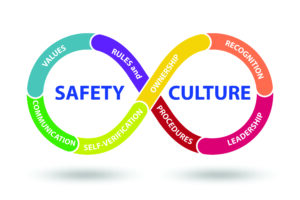
Software for jobsite safety
By Jacob Stoller
Construction Health & Safety SoftwareKeeping workers safe on a consistent basis requires constant vigilance from workers and management. Technology can help, but applying it is not as easy as it looks.
In spite of industry-wide campaigns to promote safety, construction remains one of the most dangerous professions. An estimated 40,000 Canadian workers are hurt every year on jobsites from falls alone.
A key hurdle is that construction sites, unlike factory environments, are in a constant state of flux, making it difficult to establish universal processes for ensuring worker safety. Consequently, safety depends on company-wide efforts to continuously observe and learn about safety threats and then ensure that defects are promptly corrected.
“I always tell people that safety is not one person’s job – everybody needs to be aware and thinking about it,” says Kris Lengieza, vice-president of global partnerships and alliances at Procore Technologies. “Everybody needs to be trying to prevent future incidents.”
Prevention requires continuous collection of data to stay on top of near misses, hazards, and wrong behaviours that could lead to accidents. At a macro level, the industry is applying data science to find answers in the enormous amounts of data that construction firms collect.
“The construction industry is working with various universities, both in the U.S. and Canada, to try to identify the key data we need to focus on,” says Reg Sopka, regional health and safety manager at PCL Edmonton. “Where are the weak signals coming from that are going to lead to something catastrophic happening? Where are the red flags, and what can we ignore?”
Much of the work, however, happens at a local level, with inspectors looking for dangerous situations and trying to stay ahead of the curve. Technology can help streamline the process.
“Our safety management platform is built around an inspection module that can be used on a cell phone or tablet,” says Lengieza. “If the inspector sees an elevator shaft that’s not sealed off, they can record an observation and assign it directly to the crew that deals with that.”
The most important aspect of safety, however, isn’t fixing things but fixing attitudes. When workers see safety merely as a set of rules that they can get citations for breaking, it’s hard to maintain the level of candor needed to get to the bottom of safety issues.
“A good portion of the safety program work is to ensure compliance and due diligence with the standards,” says Sopka. “We try to be a little bit more towards the safety of the work rather than the work of safety, but the world we live in is trying to find a happy balance between the two.”
Lengieza, who worked as a safety manager prior to joining Procore, has found that a good way to maintain that balance is to frequently cite workers for doing the right thing.
“We don’t always want to be here telling you that you’re doing it wrong,” says Lengieza. “We also want to acknowledge that you’re doing it right more times than you’re doing it wrong.”
The Procore safety module, Lengieza explains, can be used to record positive observations as well as negative ones.
“I could see somebody on a ladder doing all the right things – standing on a ladder correctly, and wearing gloves, safety glasses, and a hardhat, so I’d snap a picture and record that as an observation,” he says.
SEEING THE BIG PICTURE
While construction apps are getting easier to use, creating a single platform that will work in every scenario is a challenge.
“We’re a very large organization,” says Sopka, “which means we’ve got all different kinds of projects – hospitals, factories, highrise buildings – and different geographic areas. People will find something that works really well for a particular project, but it’s difficult to come up with an enterprise solution.”
There are also, Sopka says, problems yet to be overcome. For example, PCL has found that there is still considerable resistance to using cell phone and tablet-based apps and wearable devices. On some large industrial projects, cell phones aren’t allowed for project confidentiality reasons. There are also data ownership and storage issues – some clients won’t allow their data to be stored offshore, which precludes some cloud solutions.
However these issues are resolved, technology will never be the complete answer to the safety issue. It just expands the toolkit to make it easier to gather and share safety-related information.
“Just buying a piece of software is not going to solve your problem,” says Lengieza. “Technology can be a great enabler, but it really does start with investing in a good safety culture in the company.”
Jacob Stoller is principal of StollerStrategies. Send comments to editor@on-sitemag.com.






